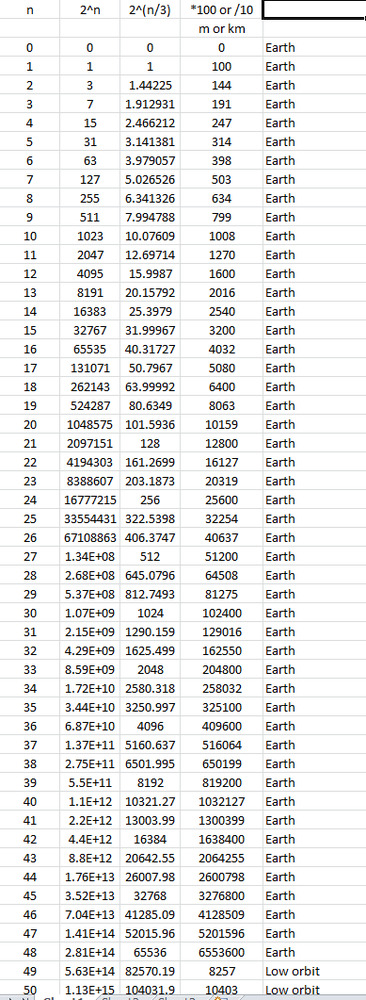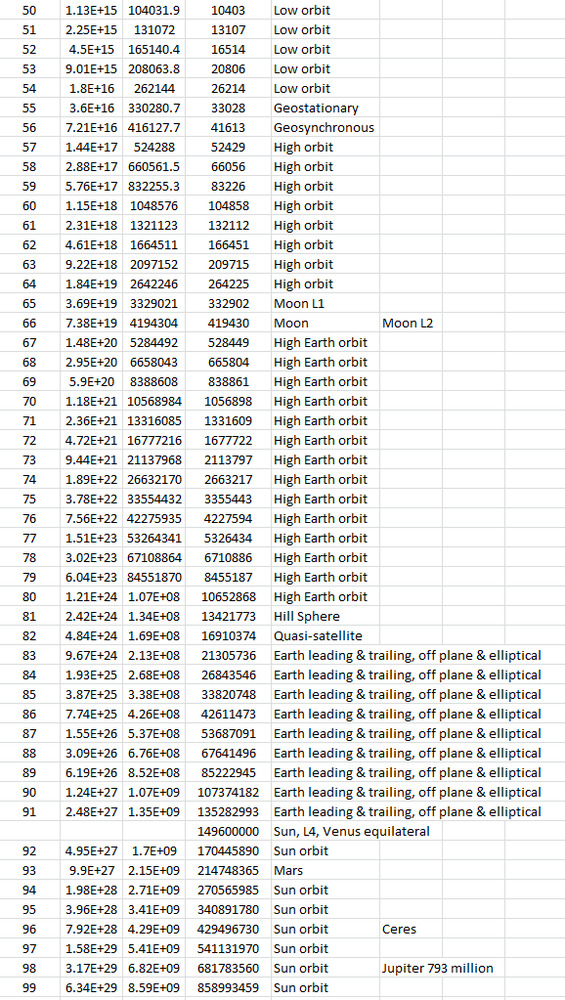mollwollfumble said:
The Rev Dodgson said:
mollwollfumble said:
I had a look once at what a compact array of satellites would look like that would act as a giant antenna with a diameter comparable to that of Jupiter’s orbit.
How does that work?
OK, I’ll look it up.
In a single word, interferometry. I started with existing 2-D layouts for compact arrays of radiotelescopes on Earth, then extended that out in 3-D into Earth orbiting satellites out to the orbit of the Moon. Then speculated on how that could be extended in Sun-orbiting satellites out to Jupiter’s orbit.
I found my Excel file called “radio telescope Jupiter orbit.xlsx”
The column ‘n’ is the radio telescope number. There are exactly 100 in all, because I’ve slotted in an extra one at the Sun-Venus L4 point between numbers 91 and 92. Of these almost half are on the Earth’s surface and the rest in space.
The column ‘m or km’ is the distance from Earth’s surface point. These distances are set proportional to 2^(n/3) because that gives the ideal distance ratio for a 3-D compact array of telescope antennas.
The first 48 are on the Earth itself (distances from the central point in metres).
The next six are in Low Earth orbit (distances form here up in km).
Then geostationary and geosynchronous orbit.
Then eight in High Earth orbit.
One at Earth-Moon L1 Lagrangian point.
The next you have a choice of siting it either on the Moon or at the Earth-Moon L2 Lagrangian point.
The next 14 are in high Earth orbit beyond the Moon.
etc.
Antenna 93 is on Mars
Antenna 96 is on Ceres or in a similar orbit
Antenna 98 is out near Jupiter.
Details.


